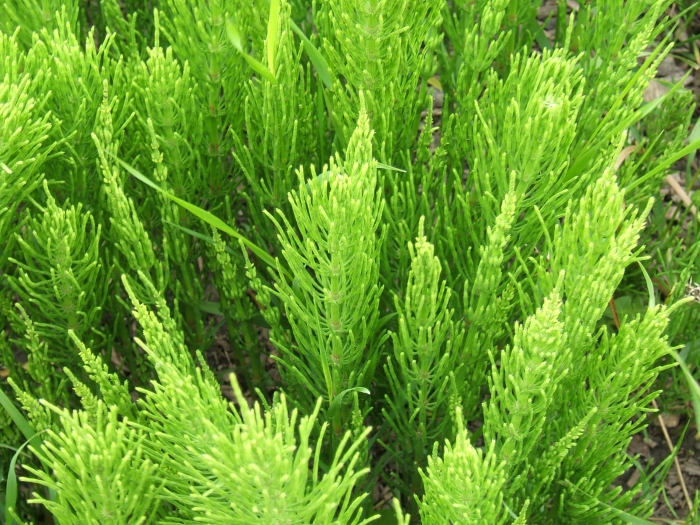Field Horsetail
(Equisetum arvense)
Field Horsetail (Equisetum arvense)
/
/

MPF
CC BY-SA 3.0
















































Estimated Native Range
Summary
Field Horsetail is known for its ability to thrive in a wide range of conditions, from cold to warm temperatures and from dry to wet environments. It is often used for its architectural appearance in water gardens and boggy areas. However, due to its aggressive growth habit and invasive potential, it should be planted with caution and may require management to prevent it from overtaking other plants. In cultivation, it prefers full sun but can tolerate part shade, and it grows best in moist, well-drained soils with a high organic content. While it can be a problematic weed, it has been used historically for its medicinal properties and as an abrasive due to its high silica content.CC BY-SA 4.0
Plant Description
- Plant Type: Herb
- Height: 2-6 feet
- Width: 1-6 feet
- Growth Rate: Rapid
- Flower Color: N/A
- Flowering Season: Spring
- Leaf Retention: Evergreen
Growth Requirements
- Sun: Full Sun, Part Shade
- Water: High
- Drainage: Fast, Medium, Slow
Common Uses
Deer Resistant, Edible*Disclaimer: Easyscape's listed plant edibility is for informational use. Always verify the safety and proper identification of any plant before consumption., Water Garden
Natural Habitat
Moist woodlands, riverbanks, and grasslands across the Northern Hemisphere
Other Names
Common Names: Common Horsetail , Ager-Padderok , Ackerschachtelhalm , Acker-Schachtelhalm , Akerschachtelhalm , Cola De Caballo , Peltokorte , Prêle Des Champs , Åkersnelle , Heermoes
Scientific Names: Equisetum arvense , Equisetum arvense var. arvense , Equisetum arvense var. campestre , Equisetum arvense f. alpestre , Equisetum arvense f. arvense , Equisetum arvense var. serotinum , Equisetum arvense var. riparium , Allostelites arvense , Equisetum arvense var. decumbens , Equisetum arvense var. duffortianum
GBIF Accepted Name: Equisetum arvense L.